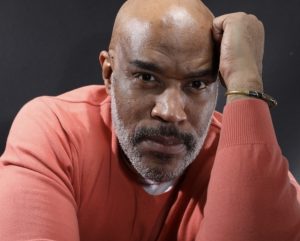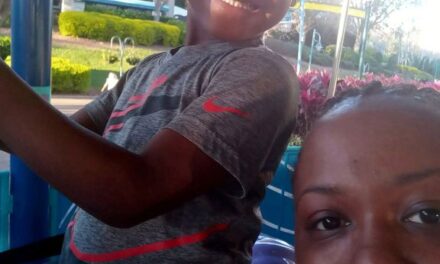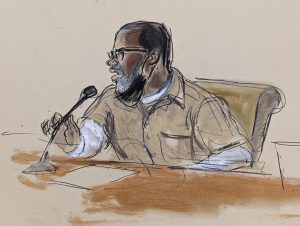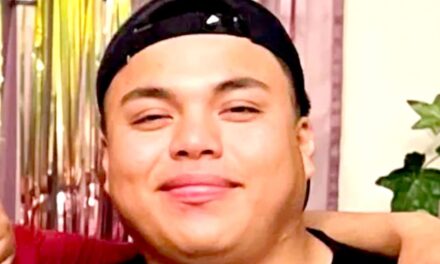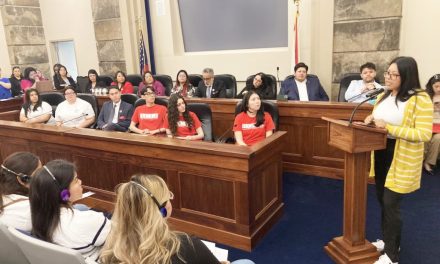By Sean Yoes,
Special to the AFRO
Many residents of Poppleton and Harlem Park who live in the shadow of the Highway to Nowhere, the infamous 1.4 mile truncated stretch of roadway that cut West Baltimore in half, have been experiencing trepidation in its interactions with city hall recently.
It is an all too familiar feeling.
“I’m a survivor of the ‘Highway to Nowhere.’ My family was displaced back in 1969,” said West Baltimore resident Minister Glenn Smith, to a news reporter in February. Smith’s family was displaced from their Lauretta Avenue home during the construction of the doomed I-170, which was supposed to connect I-70, with I-83 and I-95. Construction began in 1974, but was abruptly halted in 1979 in the wake of protests by various community organizations and environmental activists.
“We were part of a community, a thriving community. West Baltimore was a close-knit community,” Smith added.
Smith made the comments during a so-called what the Baltimore City Department of Transportation (BCDOT) calls a listening session, These listening sessions are part of the agency’s efforts to help figure out how to redevelop the Highway to Nowhere (HTN).
“We’re still living the effects from that displacement,” said Sonia Eady, a Poppleton native, who engaged in a decades-long battle with the city to save her family’s home on Carrollton Avenue, just a few blocks from the HTN.
Baltimore is in line to receive millions of dollars of federal money to redevelop the stretch of pavement and repair the adjacent neighborhood. Recently a $2 million grant earmarked for planning was allegedly awarded.
I argue the moribund Highway to Nowhere embodies many of the punitive and extractive policies that have been routinely wielded by the local, state and federal governments against Baltimore’s Black community for generations.
In 1910, according to the Baltimore Law Review, Baltimore Mayor J. Barry Mahool implemented the first ordinances of housing segregation aimed at a Black community in the United States.
In the 1930’s, Baltimore was among the first American cities to fall under the federally funded Home Owners’ Loan Corporation (HOLC), system of “residential security maps,” that instituted redlining. The practice denied investment in neighborhoods deemed high risk. The risk was based on race and ethnicity and predictably Black neighborhoods across the country were systematically rejected for bank loans for generations as a result.
Baltimore’s tax sale system was established more than a century ago to steal Black wealth and redistribute it into White hands according to Dan Ellis, executive director of Neighborhood Housing Services of Baltimore. “So it was designed to take wealth away from communities of color and put it into the pockets of wealthy, typically White people,” Ellis said. “The impact of tax sales has been very much disproportionately absorbed by people of color, typically African Americans in Baltimore. The impacts of that are still being felt today and are going to be felt until we reform this system,” Ellis added.
Scores of Black Baltimoreans are still reeling from the impact of the so-called zero tolerance policing policy instituted in 1999, by Mayor Martin O’Malley. For several years in the early 2000’s, roughly 100,000 mostly Black, mostly poor people were arrested annually in a city of about 600,000. Many of those arrests resulted in charges dropped only to have the black mark of an arrest record remain in place.
Add to this milieu of Black destruction, the disruption and displacement of West Baltimore by the HTN; these practices have been cumulative and catastrophic. The historic and persistent abuse and terrorizing of Black and poor communities have birthed and sustained the most insidious pathologies: ubiquitous blight, entrenched poverty and of course homicide at a rate of more than 300 murders a year for the last eight years.
When will Baltimore begin to repair the pervasive damage it has wrought in the Black community for generations?
Until a plausible path to repair and yes, provide long overdue reparations for Baltimore’s Black community is embarked upon, none of us will enjoy the quality of life we desire in this beautiful city with all its quirkiness, rich history and dynamic culture.
Recently, an encouraging step in this direction was taken. On March 28, some of Baltimore’s strongest community leaders and most brilliant minds addressed Baltimore City Council’s Economic and Community Development Committee. Dayvon Love, co-founder of Leaders of a Beautiful Struggle, the Black think tank, led the charge.
“When we look at enslavement and colonialism and we think about the broader conversation around reparations, we’re talking about our ability to practice sovereignty and freedom being disrupted,” said Love who helped craft House Bill 837, which passed in 2022, and led to the creation of the Community Repair and Reinvestment Fund statewide. That fund will pay reparations to communities impacted by the so-called “War on Drugs,” utilizing not less than 30 percent of revenues from the sale of recreational cannabis.
During the city council hearing, Love, Nneka Nnamdi, founder of Fight Blight Bmore and Dr. Ray Winbush, director of the Institute for Urban Research at Morgan State University, among others, lobbied the council to pass Bill 23-0353, which would create the Community Reinvestment and Reparations Commission.
The case for repair and reparations was made expertly utilizing cogent analysis, empirical evidence and an unassailable understanding of history. However, no one specifically highlighted the nexus between the repair of Baltimore’s Black community and the overall quality of life and holistic health of all city residents.
Since January 2020, there have been approximately 1,082 homicides (as of April 7, 2023) in Baltimore. The vast majority of the victims have been young Black men and the vast majority of their murderers have been other young Black men.
The Black community must deal with the ancestral, psychological and spiritual consequences of our inhumanity towards one another. Yet, that reality and the fact that Baltimore must repair the damage caused by more than 150 years of virulent policies and practices aimed at the city’s Black residents, are not mutually exclusive. In fact, many (including me) believe there is inescapable karmic resonance at work here.
Afterall, the anxiety that comes with more than 300 homicides a year poisons us all.
The fear and loathing elemental to murder and mayhem radiates outward and we all feel the heat on some level, from the Middle East to Harbor East. Constant anxiety and the stress associated with it are two of the greatest deterrents to the peaceful quality of life most of us yearn for.
It’s hard to relax and have a good time when you constantly have to look over your shoulder. Or when you have to manage your anxiety every time you pull up to a red light, because you fear the squeegee workers as they approach your Subaru Legacy, or Tesla X.
Consider this: when a Black man kills another Black man it is seemingly business as usual in Baltimore. Yet, when a Black man kills a White man (or God forbid an affluent White woman) those homicides spark some of our city’s most polarizing moments, e.g.,Timothy Reynolds (2022) and Sebastian Dvorak (2017).
Perhaps, fear poisons some of us more than others.
Redress and repair the damage to Baltimore’s Black community, or continue to suffer the retribution associated with paralyzing fear.
Sean Yoes is a filmmaker and journalist. He is currently in pre-production on the expanded version of his short documentary, Disruption: Baltimore’s Highway To Nowhere. He lives in West Baltimore.
The opinions on this page are those of the writers and not necessarily those of the AFRO. Send letters to The Afro-American • 233 E. Redwood Street Suite 600G
Baltimore, MD 21202 or fax to 1-877-570-9297 or e-mail to editor@afro.com
The post Op-Ed: Repair our communities, or else appeared first on AFRO American Newspapers .

